Want strong, toned legs? This guide covers the most effective workout for legs to help you build muscle and endurance. Whether you’re at the gym or at home, these exercises target every major leg muscle group. Ready to transform your leg day routine? Let’s dive in.
Key Takeaways
- Warming up with dynamic stretching and low-intensity cardio is crucial for preparing your legs and reducing injury risk.
- Incorporating both compound (like squats and deadlifts) and isolation exercises (such as calf raises) ensures a well-rounded leg workout.
- To maximize effectiveness, focus on progressive overload and track your progress to continually improve your strength and endurance.
Essential Warm-Up for Leg Workouts
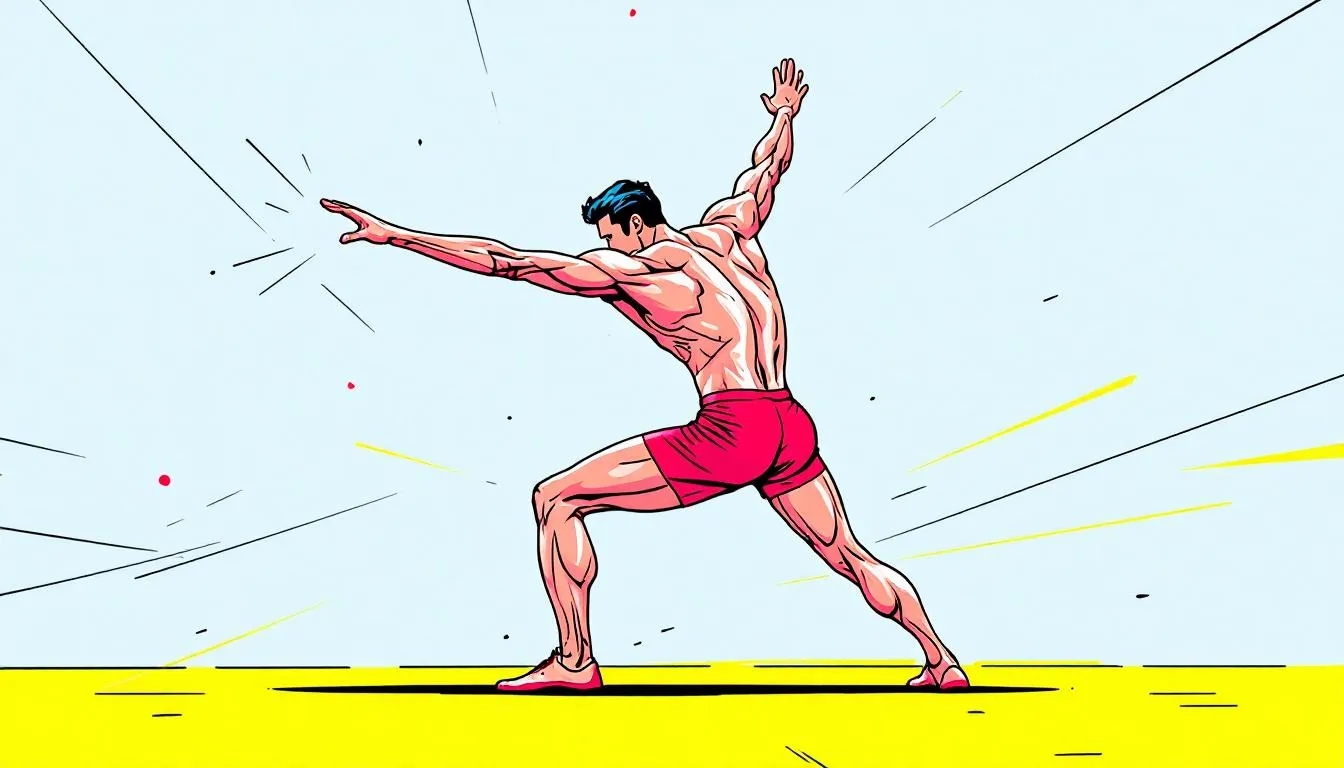
Warming up is the unsung hero of effective leg workouts. It’s essential because it prepares your muscles for the intense activity ahead, reducing the risk of injury and improving performance. A good leg day warm up enhances oxygen and nutrient delivery to your muscles by increasing blood circulation, setting them up for optimal performance. Consider it the essential prelude to your leg day symphony, activating those lower-body muscles and preparing them for action.
A well-structured warm-up should include two main components: dynamic stretching and cardio. Dynamic stretches involve controlled movements that prepare your muscles for the specific leg exercises you’ll be performing, improving mobility and stability. Meanwhile, a low-intensity cardio warm-up helps to increase your heart rate gradually, ensuring your body is ready for the workout ahead.
Dynamic Stretching
Dynamic stretching is the appetizer before your leg workout. These movements mimic the exercises you’ll be doing, improving mobility and reducing injury risk. For instance, leg swings are great for targeting your hip muscles, enhancing mobility, and preparing them for leg exercises.
Lateral lunges improve stability and strengthen your legs, making them an effective warm-up addition.
Cardio Warm-Up
After dynamic stretching, a low-intensity cardio session rounds out a comprehensive warm-up. Activities like light jogging or cycling elevate your heart rate, boosting blood flow to your muscles and preparing your body for exercise.
This warm-up also helps flush out lactic acid, reducing soreness and enhancing post-workout recovery.
Top Compound Exercises for Strong Legs
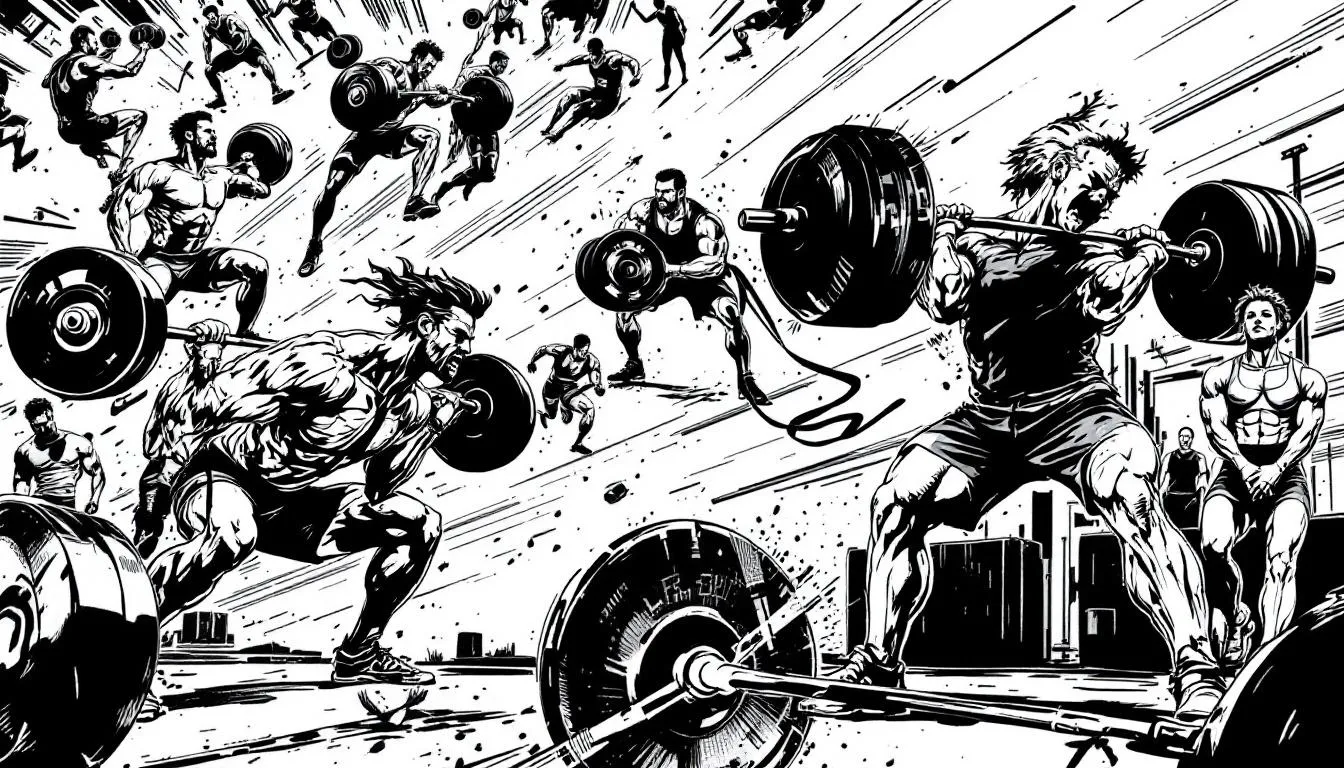
Compound exercises are the backbone of any effective leg workout. These exercises engage multiple muscle groups and joints, making them essential for overall leg development. By focusing on compound movements, you can build leg size, strength, and balance more efficiently. Incorporating a variety of movements like squats, lunges, and deadlifts ensures that all major leg muscles are activated, providing a well-rounded lower body workout.
Maximize benefits by performing compound exercises at the start of your workout when your form and energy are at their best. Here are three of the most effective compound exercises for building strong legs: squats, deadlifts, and lunges.
Squats
Squats are often hailed as the king of leg exercises, and for good reason. They primarily target the quadriceps, hamstrings, and gluteus maximus, while also engaging the core for stability. Variations like back squats, front squats, and goblet squats target different muscle groups and enhance overall leg strength.
Squats are essential whether you’re aiming to build muscle, improve flexibility, or boost athletic performance.
Deadlifts
Deadlifts are another powerhouse exercise that builds muscle and improves hip mobility. The Romanian deadlift, in particular, targets the hamstrings, gluteus maximus, and erector spinae. Proper technique is crucial:
- Stand hip-width apart
- Hold the weight
- Push your hips back
- Lower until you feel a stretch in your hamstrings, focusing on the hip hinge movement.
This exercise not only strengthens the lower body but also enhances overall core tight stability, contributing to lower body strength.
Lunges
Lunges are versatile and effective for targeting the quads, hamstrings, and glutes. Different types of lunges offer unique benefits:
- Walking lunges: build strength and endurance
- Reverse lunges: reduce knee strain and improve balance
- Lateral lunges: enhance strength and stability in the inner and outer thighs
These variations ensure balanced leg development and overall strength.
Isolation Exercises for Targeted Muscle Groups
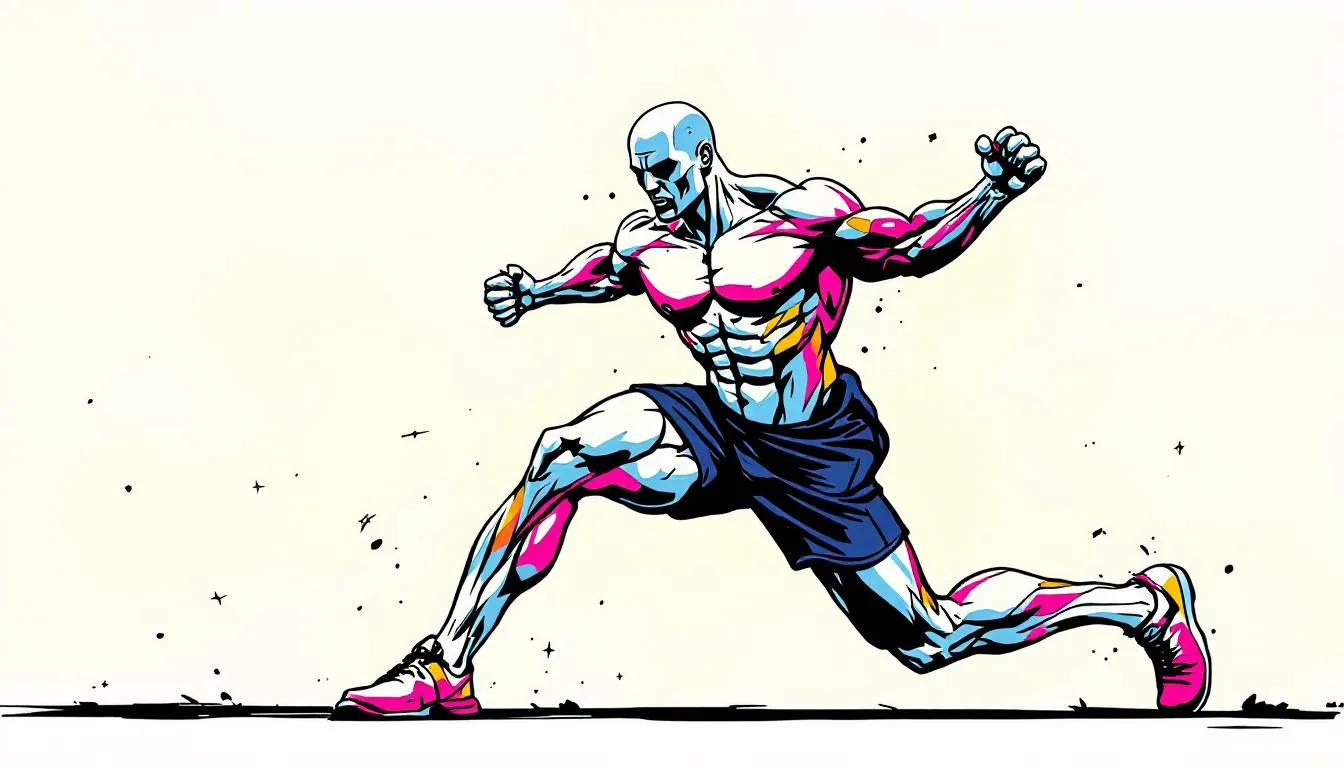
Isolation exercises hone in on specific muscle groups, offering a comprehensive approach to leg workouts. These exercises focus on areas that compound exercises might miss, leading to better muscle growth and definition.
Here are three key isolation exercises: leg press, calf raises, and the best leg exercises like leg curls. These exercises complement compound movements and ensure every part of your legs gets attention.
Leg Press
The leg press targets the quads, hamstrings, glutes, and thigh muscles. Using the leg press machine allows precise focus on these major muscle groups, helping to strengthen and sculpt your legs.
Adjusting your foot position can emphasize different muscles, making the leg press a versatile addition to your routine.
Calf Raises
Calf raises target the gastrocnemius and soleus muscles, essential for lower leg strength and stability, as well as developing calf muscles. Performing 3 sets of 12-15 reps is common, though some prefer higher volume like 4 sets of 25-30 reps.
Standing calf raises can be varied with different foot positions to target different calf areas, making them crucial for leg development.
Leg Curls
Leg curls strengthen the hamstrings, enhancing overall leg strength and stability.
Leg curls primarily target the hamstrings and calves, making them essential in any balanced leg workout routine.
Bodyweight Leg Workout for Home
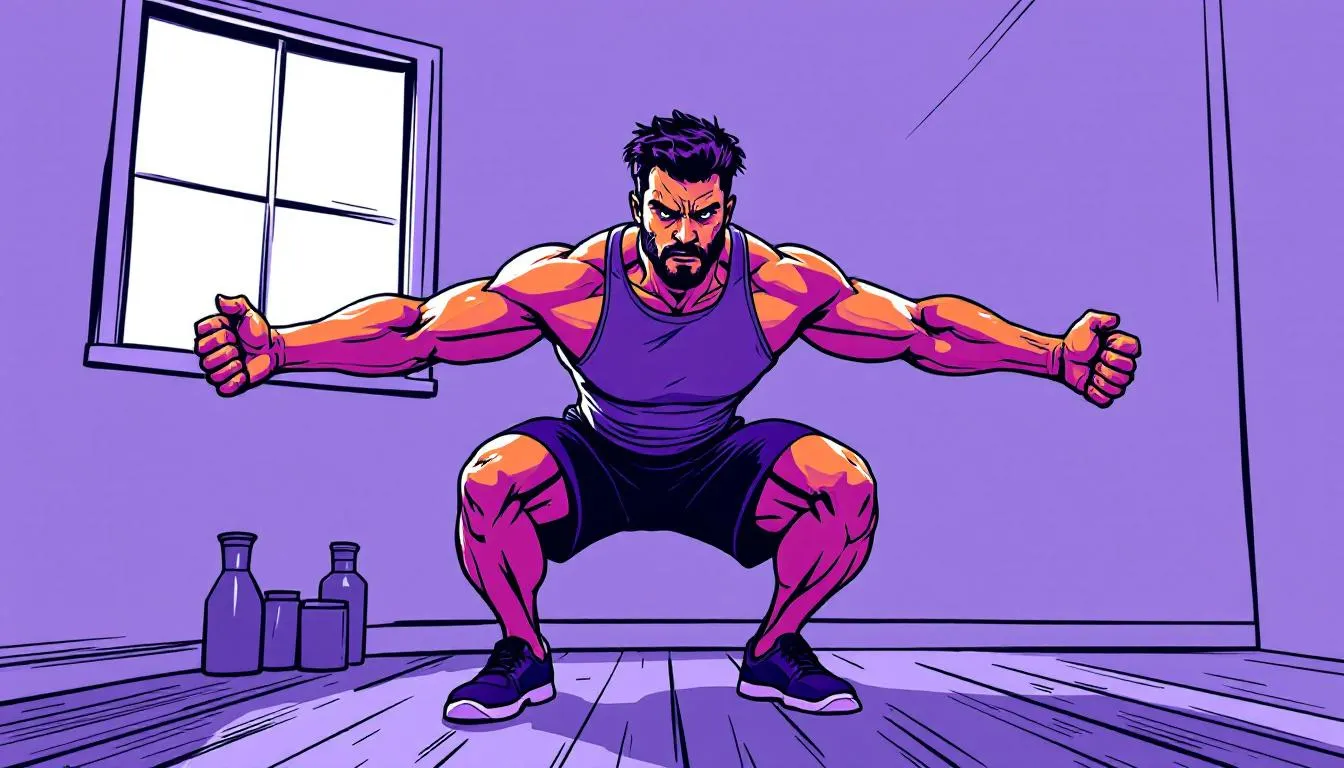
Not everyone has access to a gym, but you can still achieve a killer leg workout at home. Bodyweight leg workouts are effective and convenient, requiring no equipment. These workouts can be done anywhere, making it easy to stay consistent.
A well-rounded at-home leg workout should target all major leg muscle groups. This 30-minute routine includes bodyweight squats, glute bridges, and single-leg squats, building strength and enhancing muscle endurance and balance.
Bodyweight Squats
Bodyweight squats strengthen leg muscles and improve overall body stability using only your body weight. Stand with feet shoulder-width apart, lower your body by bending your knees and pushing your hips back, then return to the starting position.
This exercise can be done anywhere and provides a solid foundation for building leg strength.
Glute Bridge
The glute bridge targets the glutes, hamstrings, and core. Lie on your back with knees bent and feet flat on the ground, then lift your hips to form a straight line from shoulders to knees.
This exercise improves leg stability, aids pelvic alignment, and reduces injury risk.
Single-Leg Squat
Single-leg squats improve balance and unilateral leg strength. Incorporating them into your routine can correct muscle imbalances and enhance overall leg strength.
Balance on one leg, lower your hips back while keeping the other leg extended forward, and ensure your knee stays aligned with your toes slightly pointed.
Advanced Leg Exercises for Experienced Lifters
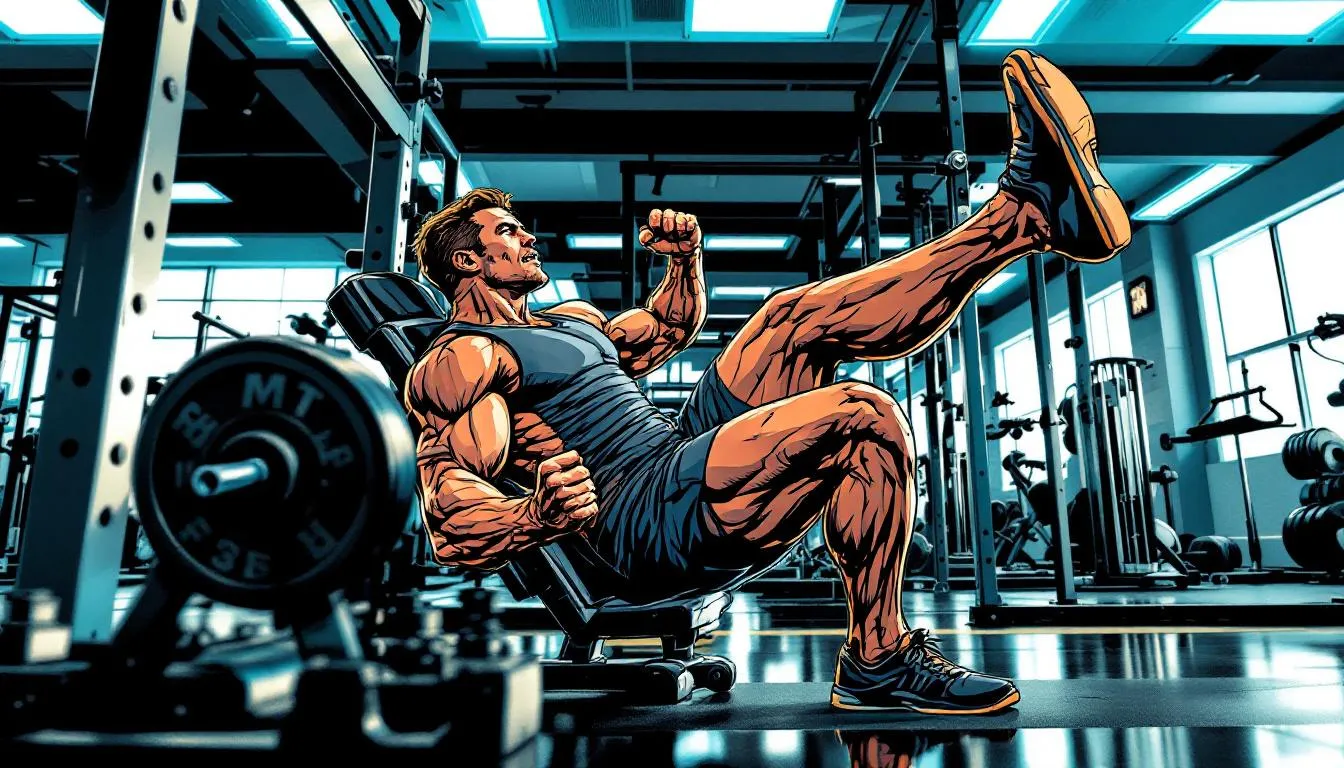
For those who seek more than basic routines, advanced leg exercises offer the chance to push limits and achieve new levels of strength and stability. These exercises are designed for experienced lifters who want to challenge themselves with more complex movements.
Here, we’ll delve into Bulgarian split squats, hip thrusts, and plyometric exercises. These demanding movements are incredibly effective for building strong, resilient legs.
Bulgarian Split Squat
The Bulgarian split squat builds strength in the quads, glutes, and hamstrings. Key positioning tips include:
- Position your front foot forward enough to keep your knee over your ankle.
- Lean slightly forward.
- Drive through the heel of the working leg to emphasize glute engagement.
This exercise is also excellent for enhancing hip stability, making it particularly beneficial for runners.
Hip Thrusts
Hip thrusts effectively enhance the strength and size of the gluteal muscles. To perform them properly:
- Maintain a neutral spine.
- Drive through your heels.
- Squeeze your glutes at the top of the movement.
- Keep your feet flat on the ground, shoulder-width apart, with a slight toe flare. Incorporating hip thrust into your routine can yield significant benefits.
Proper form is crucial to avoid back strain.
Plyometric Exercises
Plyometric exercises improve explosive power and athletic performance. Jump squats, for example, involve starting in a squat position, jumping up using arm momentum, and landing softly back into a squat. These exercises build leg strength and enhance agility and quick direction changes.
Effective Cool-Down Techniques
Cooling down after an intense leg workout aids muscle recovery and prevents soreness. A well-structured cool-down routine gradually lowers your heart rate, prevents muscle stiffness, and enhances overall recovery.
Incorporating static stretching and low-intensity cardio into your cool-down routine significantly improves flexibility and reduces injury risk. These techniques ensure effective muscle recovery, preparing you for your next leg workout.
Static Stretching
Static stretching improves flexibility and promotes recovery in major leg muscles. Holding each stretch for about 10 to 15 seconds alleviates tension and enhances muscle elasticity.
The Butterfly Stretch, for example, relieves tension in the inner thighs and hips.
Low-Intensity Cardio
Light cardio activities, such as walking or cycling, post-workout help flush out lactic acid from muscles, transitioning your body to a resting state and promoting recovery.
Consistently including low-intensity cardio in your routine enhances overall recovery and prepares your body for future workouts.
Crafting Your Personalized Leg Workout Routine
Creating a personalized leg workout routine is key to achieving your fitness goals. Consider your fitness level, exercise goals, time availability, and personal preferences. A balanced routine should include 3 to 5 exercises per workout, aiming for 3 sets of 8 to 12 reps for each exercise. For muscle growth, higher volume sessions, such as 3 sets of 12 reps or 4 sets of 8 reps, are recommended.
Incorporating a variety of exercise types, including both compound and isolation movements, ensures a well-rounded routine. Include a more in-depth stretching routine post-workout to alleviate muscle tension and reduce soreness. Adding elements like yoga and stretching into your recovery process further enhances blood circulation and flexibility.
Progressive Overload
The principle of progressive overload involves:
- Gradually increasing the weight and intensity of your leg workouts over time.
- Using exercises like leg presses that allow for controlled weight increases, suitable for all fitness levels.
- Maintaining good form while increasing the challenge to prevent injury and ensure effectiveness.
For beginners, starting with lighter weights to master the form is crucial, especially for exercises like deadlifts.
Tracking Progress
Tracking your progress is essential for gauging improvements and adjusting intensity levels. Using a journal or an app to record your sets, reps, and weights can help you maintain an accurate record of your workout performance.
Consistently monitoring your leg workout metrics leads to better decision-making in your training routine and promotes steady progress.
Summary
In summary, a well-rounded leg workout routine includes essential warm-ups, a mix of compound and isolation exercises, effective bodyweight workouts, advanced techniques for experienced lifters, and proper cool-downs. Following these guidelines will help you build stronger, more resilient legs. Remember, consistency and progressive overload are key to seeing continuous improvement. Now, it’s time to take what you’ve learned and apply it to your next leg workout. Stay dedicated, and your legs will thank you!
Frequently Asked Questions
Why is warming up important before leg workouts?
Warming up before leg workouts is crucial because it boosts blood circulation, helping your muscles get the oxygen and nutrients they need while also reducing the risk of injury. So, take those few extra minutes to warm up!
What are the best compound exercises for leg strength?
To build leg strength effectively, focus on squats, deadlifts, and lunges. These compound exercises target multiple muscle groups and are crucial for overall leg development.
How can I effectively target my calf muscles?
To effectively target your calf muscles, try calf raises, focusing on different foot positions for a well-rounded workout. This will help strengthen and tone both the gastrocnemius and soleus muscles.
Can I get a good leg workout at home without equipment?
Absolutely! You can get a fantastic leg workout at home with exercises like bodyweight squats, glute bridges, and single-leg squats—no equipment needed!
What is the principle of progressive overload?
The principle of progressive overload is all about gradually increasing the weight and intensity of your workouts. By doing this, you continuously challenge your muscles, helping them to grow and improve over time.
Healthcare disclaimer:
This article is for informational purposes only and does not substitute for professional medical advice. If you are seeking medical advice, diagnosis or treatment, please consult a medical professional or healthcare provider.